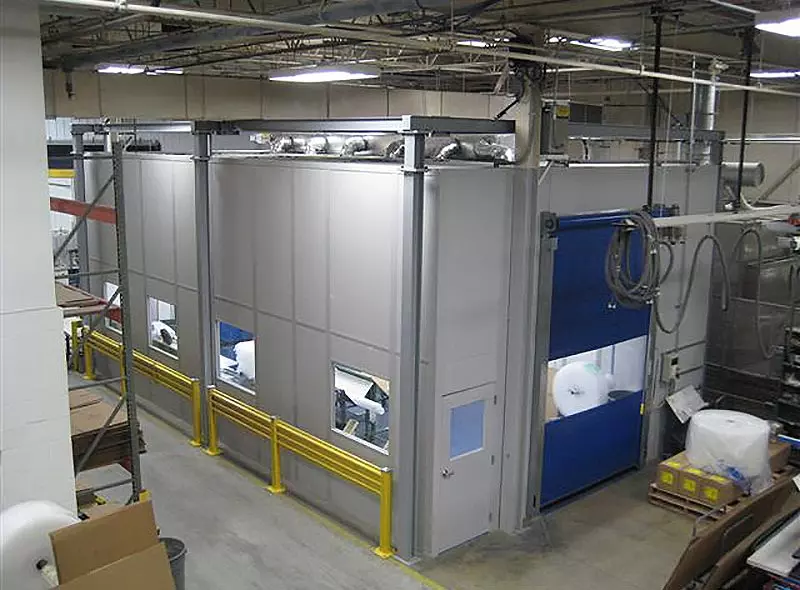


Any machine enclosure should accomplish two important tasks: housing and protecting machinery and equipment. The design of your machine enclosure dictates both, which is what makes its design so critical to the long-term performance of your machinery. To ensure proper machine enclosure design, here are 5 important considerations to make.
Your facility has invested significantly in the machinery that keeps production moving. Protecting that equipment means choosing a machine enclosure that is properly designed for that machine’s specific requirements, and your facility’s size. To make sure you’re getting the right enclosure for your machinery, consider:
How big will your machine enclosure need to be? It’s important to remember that you need to account not only for the size of the machine but also:
Every piece of machinery has an ideal operating environment. Most are posted on the machines themselves, if not in the machine’s manual. A well-designed machine enclosure will take this ideal operating temperature into account. Many modular machine enclosures can even offer vapor locks to ensure that your high-value equipment is always functioning in the ideal operating environment.
In addition to the space that employees will need within the enclosure, where specifically do they need to access the machine, and how will you accomplish that with the machine enclosure? Depending on the machinery, some facilities will require a large, overhead rollup door, while others may prefer a secure access door.
It’s also important to consider where this door will go in relation to the rest of your facility. Is there room for a door where you were planning to install this enclosure? If not, can the door be moved to another side of the enclosure?
Machine enclosures can be placed indoors or outdoors.
For facilities with a need for machinery near the production line, indoor placement makes sense. In these cases, a machine enclosure then needs to protect the machinery from the loud, dirty environment on the production line. Sound and temperature control are likely required, and air filtration may also be an important consideration.
For facilities that are already cramped and working with limited floor space, it may make sense to locate some machinery outdoors, rather than in the facility. Air compressors, for example, are often housed in a machine enclosure outside the building. This keeps these loud, large machines out of the production area, while still providing them with a well-ventilated space that is shielded from the elements.
The final consideration to make is how you plan to build your facility’s custom machine enclosure. Traditional construction means framing in and drywalling or cinder blocking around your machinery. Modular construction means deciding on specifications and ordering the appropriate prefinished modular components to ship directly to your facility. But which option is best?
Traditional Construction
Generally, when it comes to machine enclosures, traditional construction can present a greater risk to machinery and will likely take longer.
Traditional construction typically requires that the enclosure is built around the existing machinery. This is always a difficult task, as construction debris can negatively affect the machinery, throwing off sensitive calibrations. What’s more, traditional construction is likely to take longer than modular construction. Because every piece must be built on-site, your team will have to wait for all materials and then for a crew to build and assemble each of those materials.
In the meantime, that part of your production facility will likely be unable to operate due to the construction and the construction crews.
Modular Construction
Modular construction can deliver custom machine enclosure design without the hassle of traditional construction.
Modular machine enclosures are built to precise specifications at a controlled off-site facility. When all components are complete, the pre-cut and pre-mitred components are sent directly to the job site where they can be easily installed in hours, and sometimes days. Since all components are prefabricated, there’s no noise, dust, or debris to interfere with the function of any existing machinery.
In addition to the simple, clean installation process, modular construction also delivers durability and versatility, as they can easily be relocated. Modular machine enclosures stand up to both outdoor and indoor environments, and they can easily be adjusted to suit your facility’s needs as they change and grow. Should you ever need to add machines to a particular enclosure, adding on is just a matter of adding more panels.
Whether you’re looking to house a CMM machine or a digital printing press, Starrco is here to help. Our equipment enclosures are designed for your unique equipment and are installed to meet any requirement. To coordinate a site visit, get in touch with our team today.